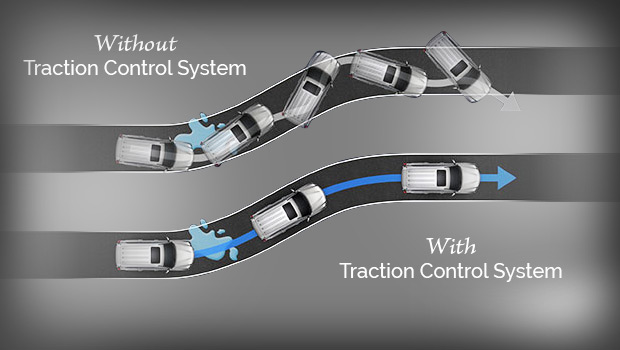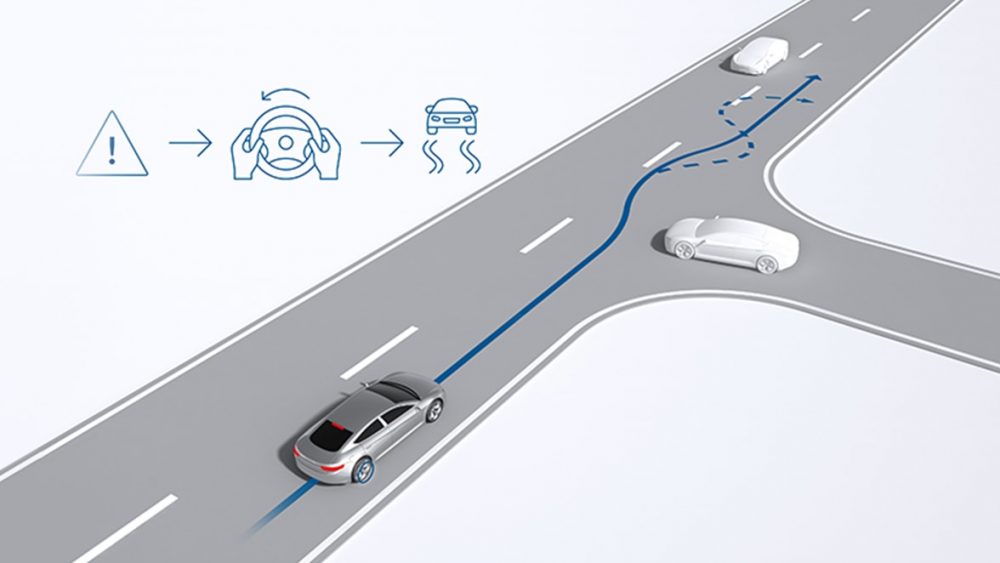Corona Virus and car safety features have one thing in common, both are advancing at an arming rate. Alongside that, the new BNVSAP norms here in India has led to the introduction of safer cars. For you to know, BNVSAP stands for Bharat New Vehicle Safety Assessment Program. These are the new crash test emission norms implementing soon in India. With that said, some cars already are built with BNVSAP standards.
Long story short, these include many driver aid electronics including ESP (Electronic Stability Programme) and TCS (Traction Control). These are the topic of discussion for today. So, let’s get started.
Traction Control System (TCS)

One of the most important safety features that is also part of the active safety to arrive in recent gen cars is the TC. Yes I know, this features is old and it is part of the safety package with the cars, well those were the high-end luxury cars. Keeping that aside, now even the Ford Ecosport gets it. But how is TCS useful? Well, this allows the car to accelerate linearly without losing traction. TCS is especially useful under slippery condition, like driving on slow, wet or muddy roads. In simple words, with TCS switched on, you cannot perform a burnout.
How does TCS work?

First things first, TCS works in unity with a wheel speed sensor installed in all the driving wheels (can be 2 wheels or 4 wheels). As the name suggests the wheel speed sensor, gives the exact speed or the revolution of the engine to the ECU. With that clear, let’s move to its working.
- Imagine a car driving on wet roads, under acceleration, it’s easy to spin the wheels. This is where TCS kicks is Yo! The wheel speed sensor detects slip in the driving wheels and sends a signal to the ECU.
- In turn, the ECU signals the braking system and it slowly applies brakes to the wheel that is losing traction.
- In the end, the wheels gain their grip back, and the driver can roll the vehicle as normal.
Fun Fact: A traction control system is better suited for rear-wheel-drive cars, as they are more vulnerable to lose control just like the crowd Killer FORD MUSTANG.
Electronic Stability Program (ESP)

One such not so common safety feature is ESP. Furthermore, here in India, cars are not so powerful or they are not rear-wheel drive. With that said, ESP is one of the very confinement parts of active safety, as it works in conjunction with a couple of sensors and electronics. An ESP brings an out of control vehicle in control by hook or by crook. In simple words, if a car loses traction because of hard steering input, the car will come back in control. Without further, let’s see its working.
How does ESP work?
The Electronic Stability Program uses the Steering angle sensor, yaw rate sensor, ECU, a hydraulic unit and similar to TCS, a wheel speed sensor. Well, the speed sensor is one of the most used sensors in an automobile (for obvious reasons).
- As mentioned above, the wheel speed sensor detects the speed of each wheel and is in constant communication with the ECU.
- Well, if sudden steering input is given, at high speeds it is evident to lose control of the vehicle. Not just the wheel speed sensor but also, the yaw rate sensor is responsible to calculate the stability of the vehicle.
- In the end, the car again applies brakes to the wheels those are least in control, hence gaining the stability of the vehicle back.
Also, Read Honda City vs Hyundai Verna | Through Every Generation in India
It’s good to see Indian car buyers now having safety is on top of their priority list.
Fun Read: Types of Windshield Cracks and When Should you Replace One
Tell us in the comment section below, which safety feature you wanna know about.







Both of the feature once available in all ford automatics and in sub 8 lakh manual ford freestyle titanium variant
One of the must have feature to be given in all the cars
The are indeed necessary features to have in a vehicle.
my car doesn’t have TCS but on slippery roads ESP does the same thing that you have told for the TCS.
Hello Captain, you are right. ESP in general consists or multiple features that are used to keep a car stable. Traction Control is one of these features that moderates power to your wheels to make sure the tires get maximum grip.
Hello Captain, you are right. ESP in general consists of multiple features that are used to keep a car stable. Traction Control is one of these features that moderates power to your wheels to make sure the tires get maximum grip.